Different types of water lilies are explained in Ayurveda. Among them, Nymphaea stellata and Nymphaea alba are most important. Almost all have been explained to have similar health benefits.
Botanical name- Nymphaea alba Linn
Family- Nymphaeaceae (Kamala kula)
Table of Contents
Vernacular names
Names in different languages:
English name- White water Lily
Hindi name- Koyi
Telugu name- Kauva Puvvu
Malayalam name- Kamod
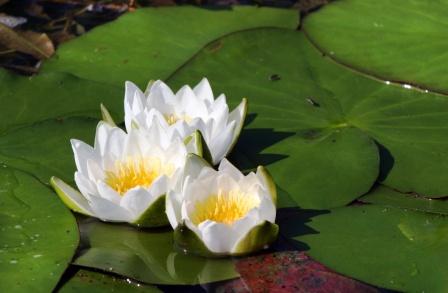
Sanskrit Synonyms
Shveta Kuvalaya, Shweta Jalaja – Due to white colored water lily flowers
Kumuda, Abja, Abda, Ambhoda, Ambuja, Jaleruha, Somapriya – Born in water
Kairava, Pankaja, Kalhara, Kalhara, Kusheshaya Shyamavrunta, Neelavrunta, Chandrakanta Shashipriya
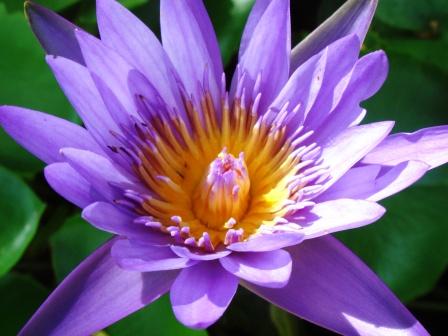
Major chemical constituents
Water lily Flower- Nymphalin(glucoside), Quercetin,Kaempferol, etc
Roots- Luteolin
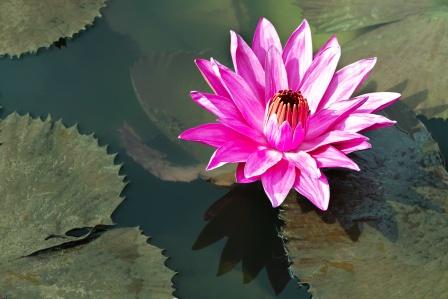
Classical categorization
Charaka and Vagbhata – Mutra Virajaniya (group of herbs that impart natural colour to the urine.)
Sushruta- Utpaladi
Bhavaprakasha – Pushpavarga
Dhanvantari Nighantu – Karaveeradi Varga
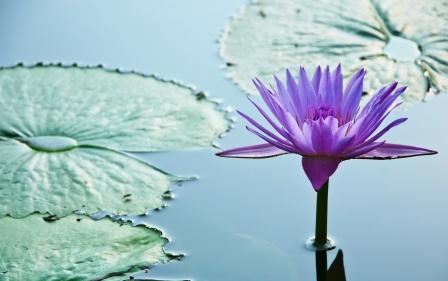
Types
Types of water lilies:
Various Lily species are explained in Ayurveda with similar qualities.
White water lily – Nymphaea alba – Shveta Kuvalaya, Kumuda
Blue water lily – Nymphaea stellata – Neelotpala
Read water lily – Nymphaea rubra – Raktotpala
Acc. to colour of flowers
1. Swetotpala
2. Niltpala
3. Utpala
Medicinal properties
Water lily medicinal properties
Rasa (taste) – Madhura (sweet), Kashaya (astringent), Tikta (bitter)
Veerya – Sheeta
Guna (qualities) – Laghu (lightness), Snigdha (unctuous, oily), Picchilla (stickiness)
Vipaka- Madhura – Undergoes sweet taste conversion after digestion.
Karma- Balances Pitta and Kapha Dosha
Part used, dosage
Part used: Rhizome, Flower,seeds, whole plant
Dosage:
Fresh juice of Rhizome 10-20 ml
seed powder 3-6 grams
Sanskrit verse
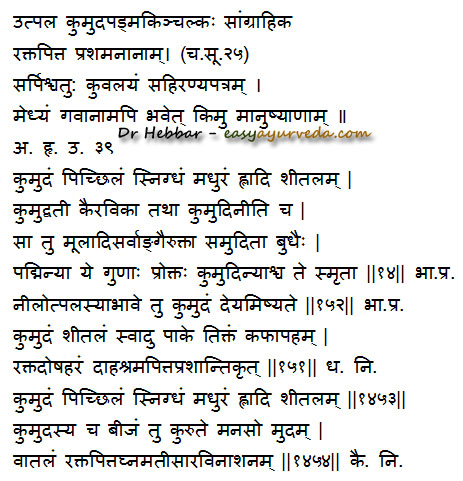
उत्पलानि कषायाणि रक्तपित्तहराणि च|
utpalāni kaṣāyāṇi raktapittaharāṇi ca| – Charaka Sutrasthana 27/115
Lotus and water lily are quite similar in use. They are the best in
Sangrahika (absorbent, useful in chronic diarrhea, IBS, colitis) and Raktapitta (Bleeding disorders such as Ulcerative colitis, nasal bleeding, menorrhagia). To re-frame the above sentence,
Among the herbs that are useful as absorbent and in bleeding disorders, lotus and water lily are the best.
Lotuses and lilies are astringent and useful in bleeding disorders due to Pitta imbalance.
Kumudini
Kumudini – whole plant of Water lily –
The flower along with root, stem seeds combined is called as Kumudini, Kumudvati, Kairavika.
The quality of the whole plant is similar to Padmini (whole plant of lotus) –
Sheetala – coolant
Gurvi – Heavy to digest
Rooksha – dry
Madhura – sweet
Lavana – salt
Balances Pitta, Kapha Dosha and Rakta (useful in blood vitiation disorders)
Vata Vishtambakarini – causes constipation.
Benefits, indications
Water lily benefits:
Hladi – good and comforting for mind and heart
Sheetala – Coolant
Indicated in:
Raktadosha – blood impurity and vitiation disorders such as acne, skin diseases, bleeding disorders etc
Daha – burning sensation, as in gastritis, neuropathy, burning sensation in eyes etc
Shrama – tiredness, fatigue
Water lily seeds
It helps in refreshing the mind and to treat depression.
It is-
Vatala – increases Vata Dosha
Vatala – increases Vata Dosha
Indicated in –
Raktapitta – Useful in bleeding disorders such as nasal bleeding, heavy periods, etc
Atisara – helps in treating diarrhea , dysentery
Soon after delivery, a drink made by milk – boiled with quarter part of water lily petals is administered to the mother. (reference: Sushruta Sharira Sthana 10)
Side effects, research
Water lily side effects:
In some, it may cause constipation.
Can be used during pregnancy, lactation and in children.
Research:
Anti inflammatory activity of ethanolic extract of Nymphaea alba
Hepato-protective activity of N. alba
Anti-depressant activity of Nymphaea alba
Interaction with medicines, supplements
Can this be used while taking Homeopathic medicine?
Yes. This product does not react with homeopathic medicine.
Can this medicine be continued while taking supplements like multivitamin tablets, Omega 3 fatty acids etc?
Yes. Generally, this product goes well with most dietary supplements. However, if you are taking more than one product per day, please consult your doctor for an opinion.
With western
medicines
Seek your
doctor’s advice if you are taking this product along with other western
(allopathic / modern) medicines. Some Ayurvedic herbs can interact with modern
medicine.
If both Ayurvedic and allopathic medicines are advised together, then it is
best to take Allopathic medicine first, wait for 30 minutes and then take the
Ayurvedic medicine.
Ayurvedic medicines
Ayurvedic medicines with Kumuda / Utpala as ingredient
Darvyadi Kashaya – used in the treatment of heavy menstrual bleeding with pain, leucorrhoea etc.
Phal Kalyan Ghrita – used in Ayurvedic treatment of male and female infertility.
Samangadi Churna – It is used in Ayurvedic treatment of bleeding hemorrhoids. It is a simple combination of six herbs.
Chandanadi Lauh – used in the treatment of chronic fever
Puga Khanda – used in the treatment of vomiting, gastritis, dizziness, abdominal pain etc.
Sthanika Karma (Systemic Action)
External Application – External application of its flower paste helps to relieve burning sensation
Internal administration-
Nervous system – Improve intellect, mind calming. Indicated in Epilepsy, giddiness etc.
Digestive System – Absorbent, indicated in excessive thirst, vomiting, diarrhea, Hemorrhoids etc.
Reproductive system – Garbhasthapaka (Helps to retain pregnancy)
Excretory System – indicated in pittaja prameha
Circulatory system – Indicated in bleeding disorders
Tapakrama – Indicated in fever associated with burning sensation, Its seed with Laja is used in fever.
Satmikarana – Anti poisonous , promotes body strength.











3 comments
vata2014
How can the flowers be prepared for medicinal use?
Dr J V Hebbar MD(Ayu)Author
Dried under sunshade or in a drier.
Dr J V Hebbar MD(Ayu)Author
I could not find a supplier. Please search in Indiamart.com